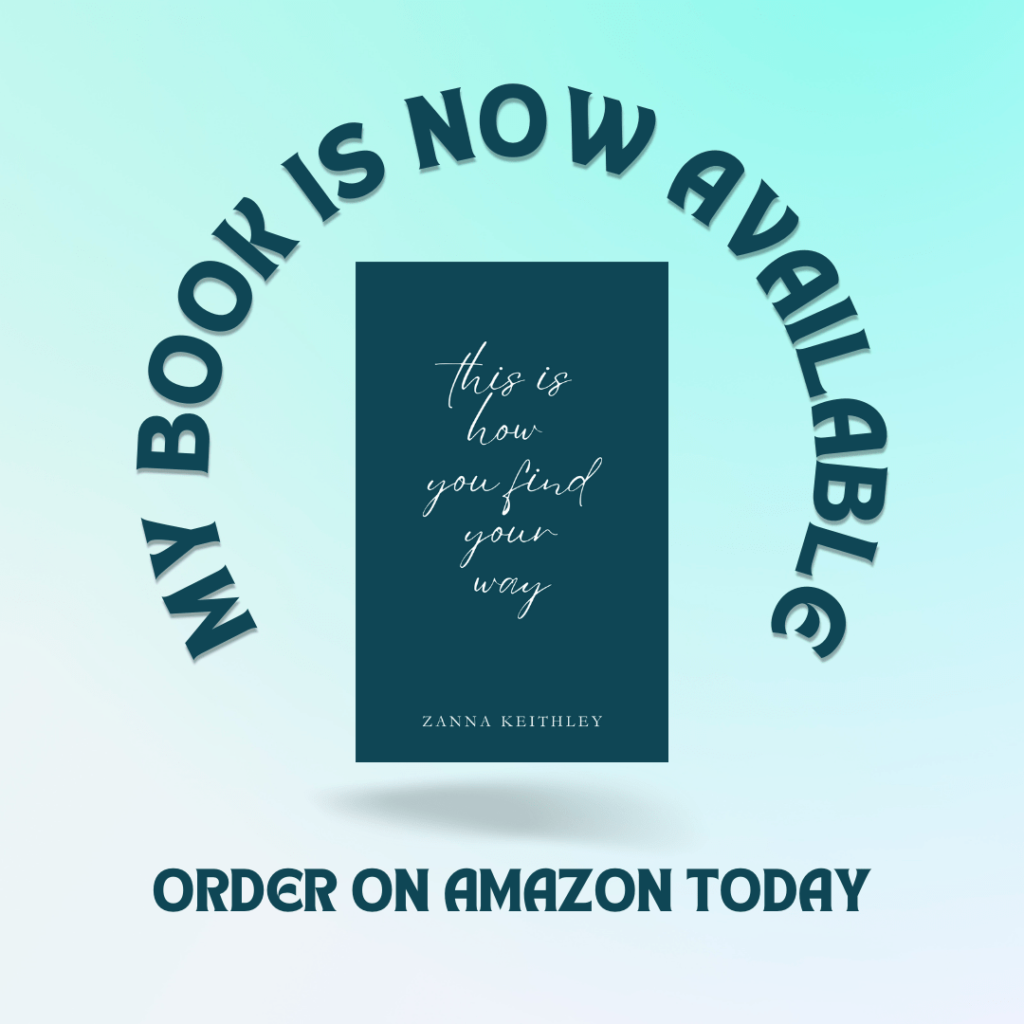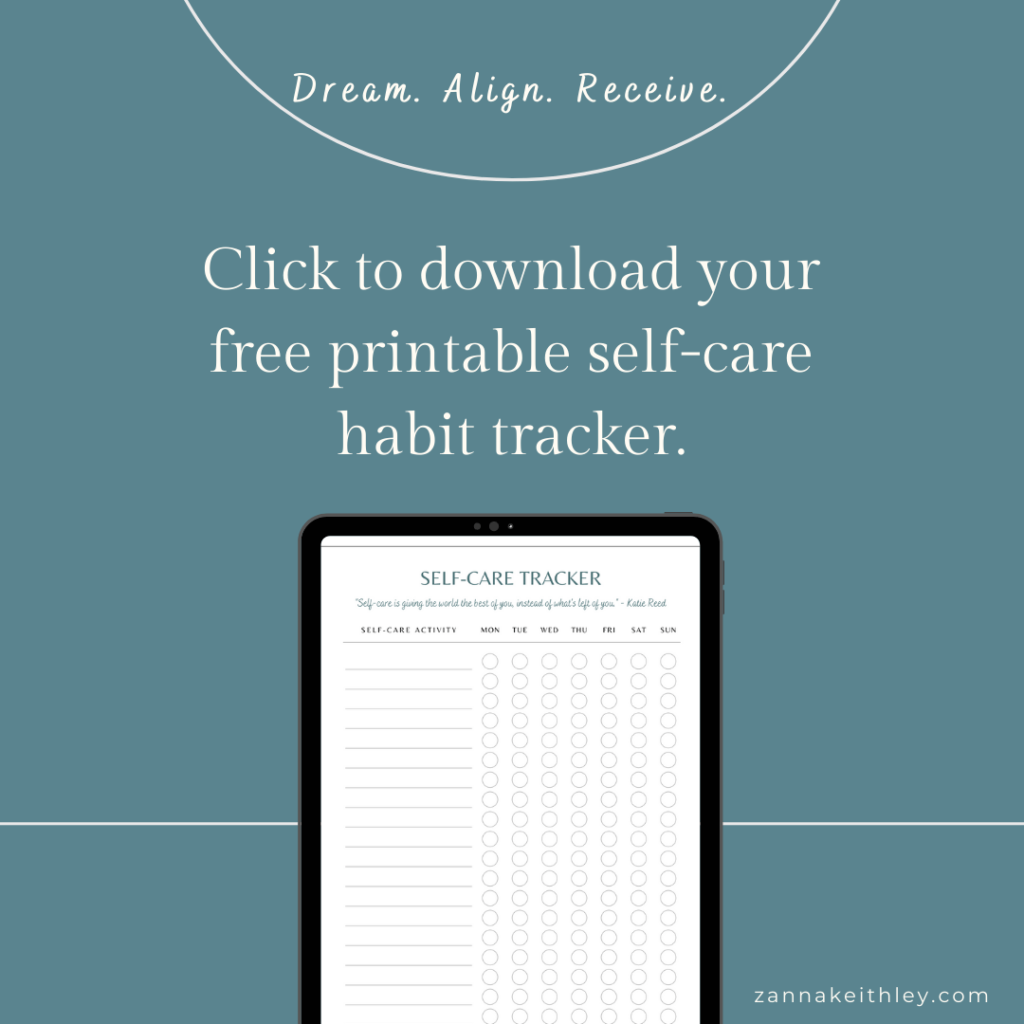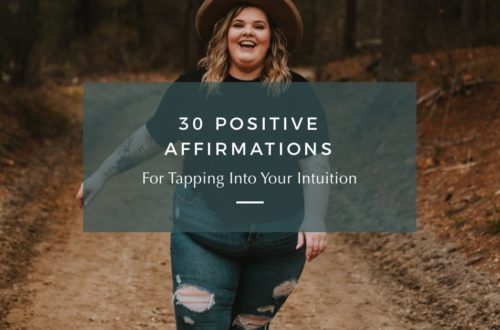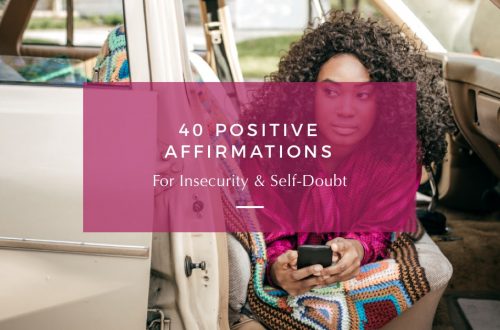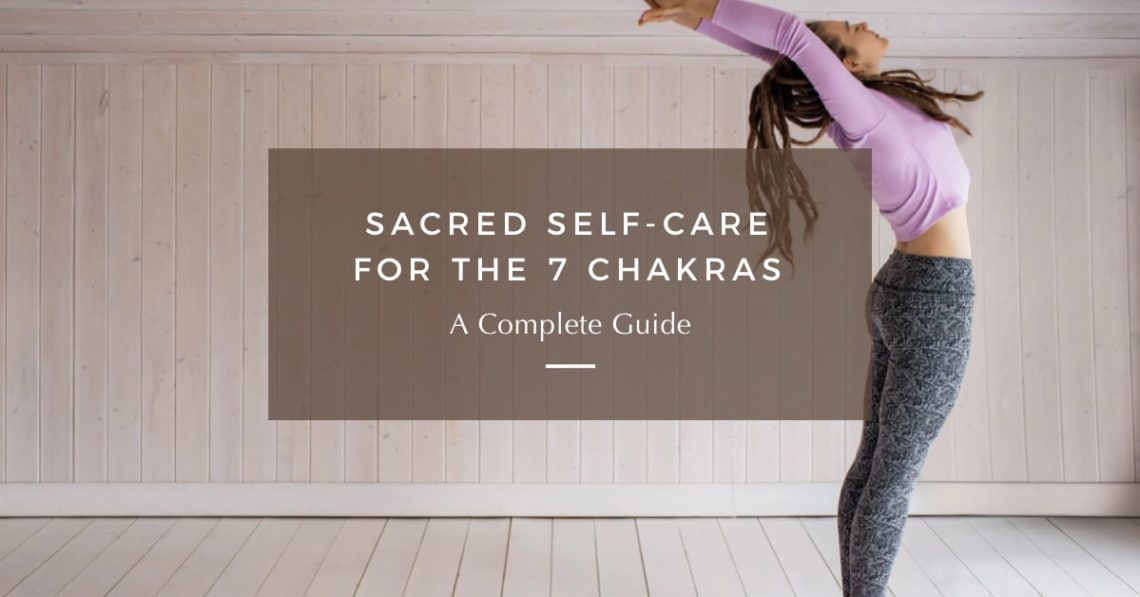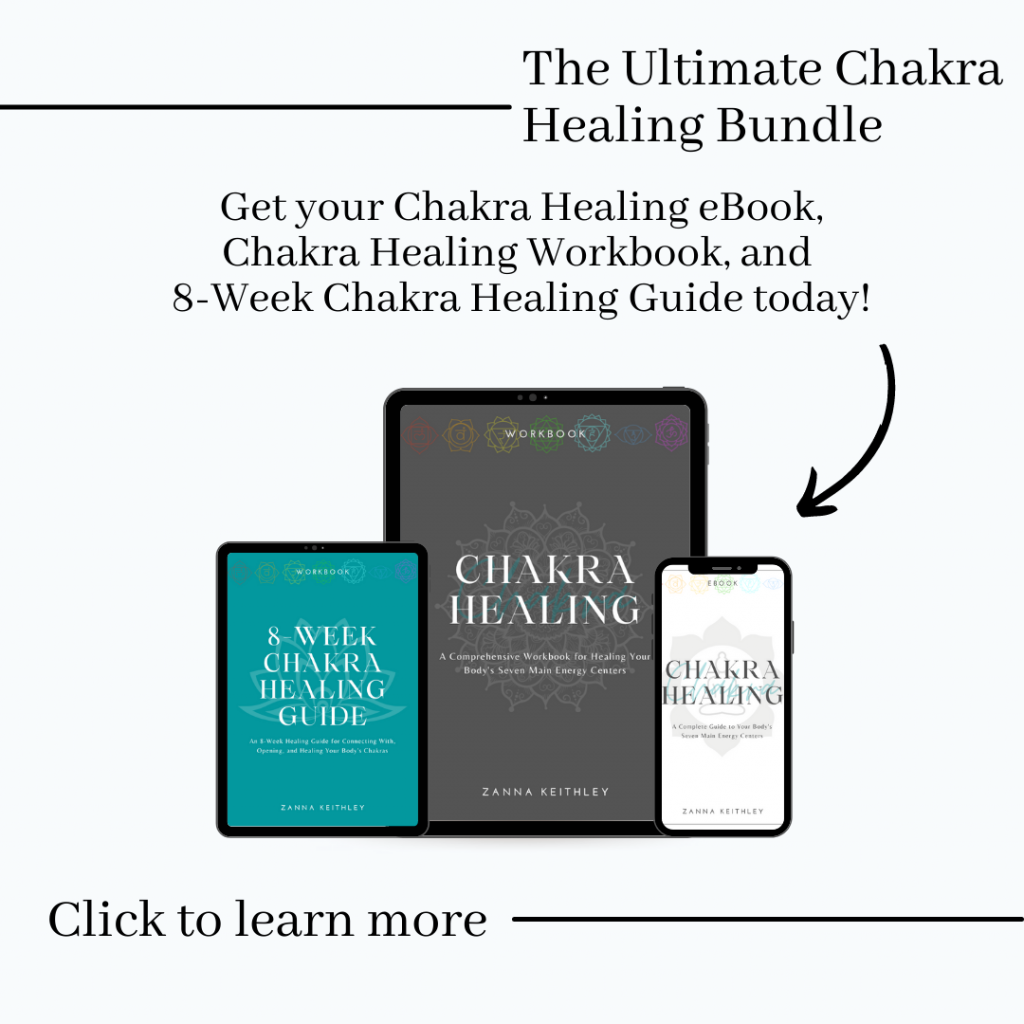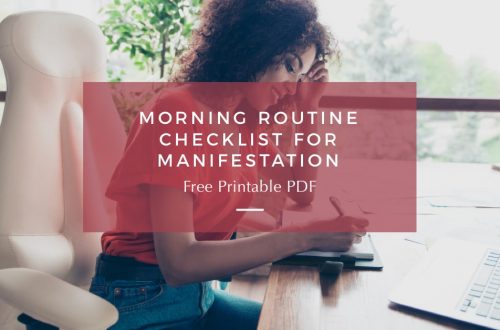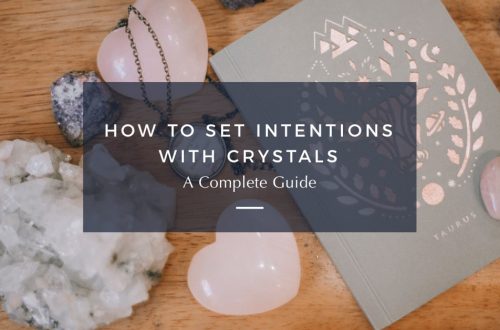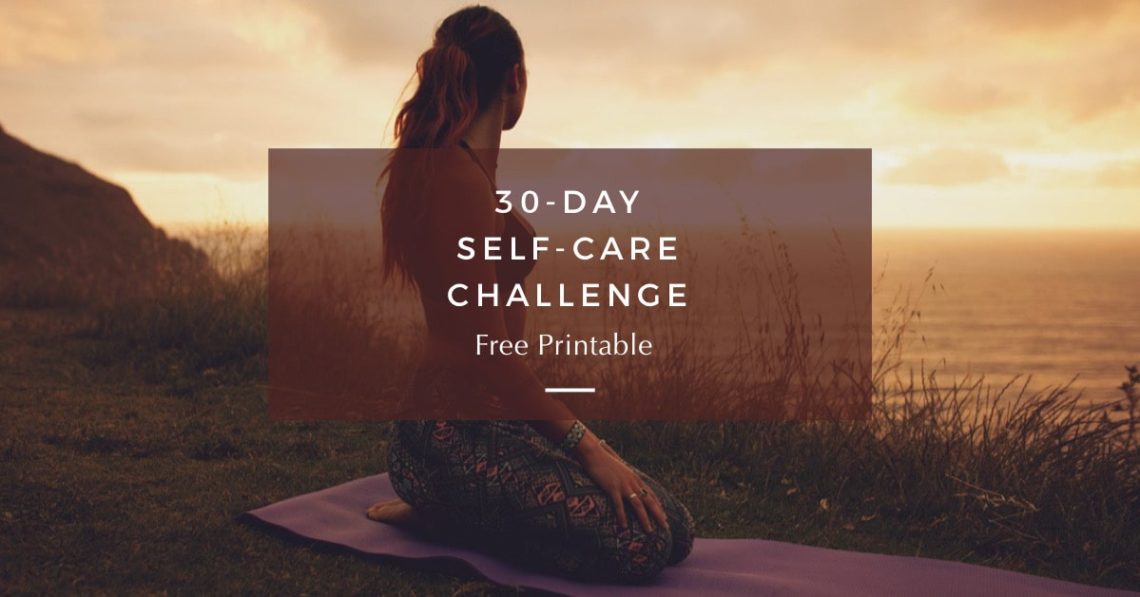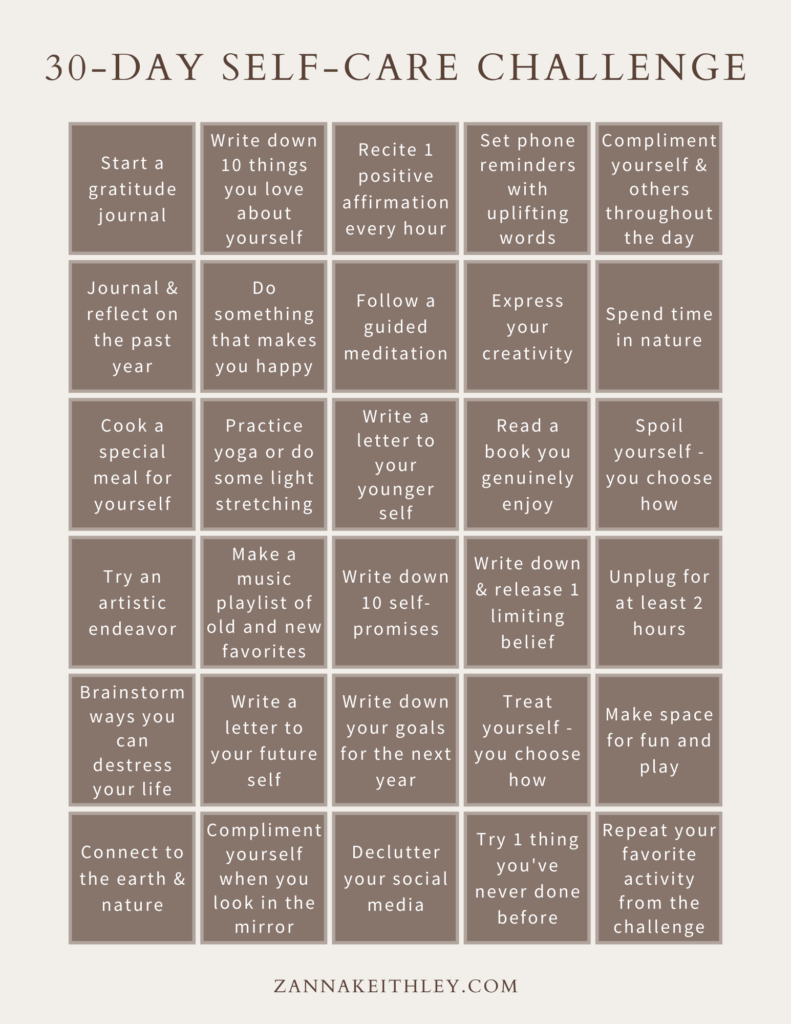-
Self-Care Plan + Free Printable Self-Care Habit Tracker
Below, learn how to create a personalized self-care plan that supports your whole self: mind, body, and soul. Plus, download your free weekly self-care habit tracker to help you remain committed and consistent with your daily self-care routine.
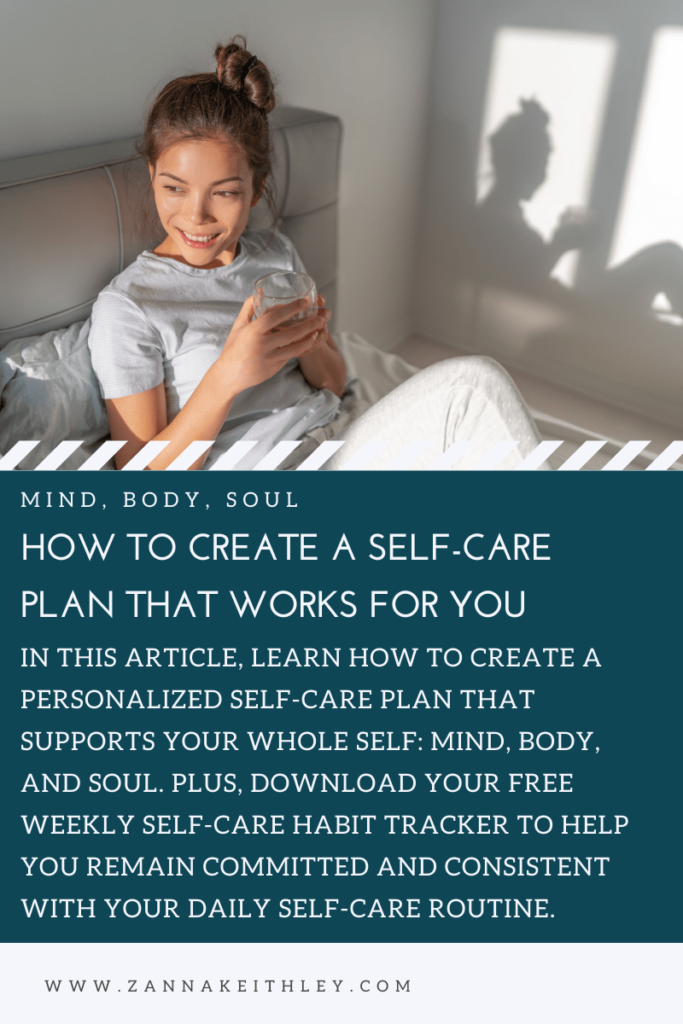
Pin this for later! How To Create A Self-Care Plan That Works For You What Is A Self-Care Plan?
Self-care refers to the combination of practices you engage in to serve and support your physical, spiritual, mental, and emotional well-being. These practices range from the small things you do each day (like brushing your teeth) to the bigger practices that nourish your mind, body, and spirit (like unplugging from social media during the weekend to focus on your innermost self).
When you ask someone whether they practice self-care, you’ll often hear the response that they don’t have time for self-care. You may have even said this yourself a time or two.
This is because we often associate self-care with spa days, pedicures, and those really “big” things that we consider to be luxuries.
But self-care is intrinsically so much more.
You practice self-care when you focus on taking deep, mindful breaths at a traffic light instead of stressing about how many seconds it’ll take for the light to turn green.
You practice self-care when you set boundaries to protect your energy.
You practice self-care when you meditate for ten minutes in the morning before starting your workday.
Self-care can be practiced in many ways, big and small. And a self-care plan personalized to your specific needs can help you prioritize your self-care not just as an “every once in a while” practice but as something you do every single day.
But first-—what exactly is a self-care plan?
A self-care plan is a set of practices you prioritize in your daily life to take care of your mental, physical, emotional, and spiritual health. This is kind of like preventative care for your mind, body, and soul. Instead of waiting until your cup is completely empty before you finally let yourself focus on your own needs, you can keep your cup full each day by engaging in activities that nourish your spirit.
Below, you’ll learn how to create a self-care plan that works for you in seven simple steps. Plus, be sure to download your free self-care habit tracker to help you stay committed and consistent in your daily self-care routine. (Click here to skip straight to your freebie!)
- You May Also Like: 30-Day Self-Care Challenge (Free Printable)

How To Create A Self-Care Plan That Works For You
Step 1: Define What Self-Care Means To You
The first step in building a self-care plan is to define what self-care means to you. By creating your own definition of self-care, you can focus on incorporating practices into your daily routine that fit this definition.
We’re all different, so we likely won’t all have the exact same definition of self-care. For instance, maybe you want to focus more on the spiritual side of self-care, or maybe the spiritual aspect is less important, but mental self-care is your priority.
To help you get started, here are a few definitions of self-care from individuals and health organizations that you can use as a foundation:
- The World Health Organization defines self-care as “the ability of individuals, families and communities to promote health, prevent disease, maintain health, and to cope with illness and disability with or without the support of a healthcare provider.”
- The Global Self-Care Federation defines self-care as “the practice of individuals looking after their own health using the knowledge and information available to them. It is a decision-making process that empowers individuals to look after their own health efficiently and conveniently, in collaboration with health and social care professionals as needed.”
- And I love this quote by writer Katie Reed: “Self-care is giving the world the best of you, instead of what’s left of you.”
- And another one I love by author Robyn Conley Downs: “Self-care: doing the things that make you feel more like yourself.”
Craft a definition that feels authentic to you, and let this be your guiding light as you create a self-care plan personalized to your needs.
Step 2: Identify Your Objective
After you’ve defined self-care for yourself, take some time to identify your purpose and objective for creating this plan.
For instance, is there a specific problem in your life that you’re trying to solve? Do you find yourself tired and burned out by the end of the week due to never-ending tasks, chores, and to-do lists? Are you looking to support your own health and well-being for long-term, sustainable happiness?
Identifying your objective will help you as you begin brainstorming new self-care practices you want to include in your daily routine.
If your objective is to create a mindset of peace and calm so you won’t become overwhelmed by external demands, then you’ll know to include practices to support a calm mindset (like meditation, yoga, and breathing exercises).
If your objective is to take care of your long-term health and well-being (kind of like preventative care for your whole self), then you know you’ll want to include self-care practices that accomplish this goal.
Finally, identifying your objective will help you to stay on-track for those self-care activities you might not always want to do. While the majority of your self-care plan should feel really good to you (i.e. you should want to do these things because they genuinely make you happy), there may be a few things you’re not super excited about. Exercising is a big one for a lot of people.
There may also be times when you want to practice self-care, but your mind tells you that you should be working late at night or doing something more “productive.”
In these moments, remembering your objective—or your why—can help you realign with this important truth:
Self-care isn’t a luxury. It’s a necessity for the long-term health of your mental, emotional, physical, and spiritual well-being.
Step 3: Acknowledge The Self-Care Practices You Already Regularly Do
Self-care isn’t just about the really big things that take dedicated time and effort to complete. It’s also about the little things you do in your daily life to take care of your entire well-being: mind, body, and soul.
Showering, brushing your teeth, and washing your face are all examples of self-care you likely already practice in your daily life. Scheduling doctor’s appointments is another example of self-care. So is making healthy food choices and getting enough sleep at night.
You’re likely already practicing self-care in both small and big ways. If you meditate regularly, go to yoga class a couple times a week, or take a daily walk outside, you’re already dedicating time to self-care. It may not always feel like this because we often associate self-care with spa days and bubble baths, but self-care comes in all forms.
(And some of the most important daily self-care practices you can do that don’t take any extra time or energy on your part? Speaking to yourself with kindness and compassion when no one is around. Being kind to yourself in the privacy of your own mind. Building yourself up rather than tearing yourself down.)
Write down all the things you’re already doing to nourish your mind, body, and soul. You’re not building your self-care plan from nothing. These self-care practices you already do will be the foundation for your well-rounded, personalized routine.
Step 4: Write Down Any Negative Coping Mechanisms You May Have
This one may be a little harder, but it’s important to be honest with yourself. When you’re feeling stressed or overwhelmed, do you have any negative coping mechanisms that might feel good in the moment but don’t contribute to your overall health and well-being?
Negative coping mechanisms could include drinking, eating junk food, impulsive spending, consuming social media and gossip websites, and excessively withdrawing from others.
Write down any negative coping mechanisms you have that you’d like to release. A self-care plan isn’t just about what you add into your life but also what you’re letting go of. When you let go of what no longer serves you, you make space in your life for more of the things that do.
As you begin thinking about what new self-care practices you want to incorporate into your life, consider the negative coping mechanisms you’ve leaned on in the past. Self-care means acknowledging these coping mechanisms (without judgment or criticism—remember, you’re only human) and understanding the root of why you lean on these things to cope with difficult situations.
Sometimes, these negative coping mechanisms may be easy to let go of and replace. Maybe you tend to go straight to the junk food when you’re feeling stressed at work, and you can instead turn your attention to breathing exercises, meditation, nature walks, positive affirmations, and other tools to serve and support you.
But in other scenarios, these negative coping mechanisms may be a little more difficult to let go of. It may also go beyond the coping mechanism itself—maybe it’s the root of the issue that really needs to be addressed.
If this is the case, remember that talking to someone—whether that’s a therapist, counselor, or someone else who can help you—is also an important aspect of self-care.
Step 5: Write Down The Self-Care Practices You Want To Add To Your Daily Routine
Now, the fun part. What self-care practices do you want to add to your daily routine?
To do this, it might be helpful to break it down into categories: Mental Self-Care, Physical Self-Care, Emotional Self-Care, and Spiritual Self-Care. You can also include a category for Professional Self-Care, which would include self-care practices that can support you while you’re at work.
When you’re making your plan, try not to make it too overwhelming—and just as importantly, make it something that actually feels exciting for you. Don’t throw in things just because you think you should do them. Fill it with activities that feel good and right for you.
Some people may love to cook and find a lot of joy in the cooking process, but if this isn’t you, don’t force it. In fact, your personal self-care plan might include ideas to decrease your time spent cooking throughout the week.
Here are some ideas for different types of self-care practices you can include in your plan:
Mental Self-Care
- Practice mindfulness
- Learn a new skill
- Read a book rooted in personal growth
- Unplug from social media
- Do something creative
- Talk to a counselor or therapist
Emotional Self-Care
- Journal
- Create a gratitude list
- Spend time in the sun
- Have a coffee date with a friend who always lifts your spirits
- Take a relaxing bath with candles
- Hug someone you love
- Watch your favorite funny TV show
- Laugh, cry, or do a little of both
Physical Self-Care
- Stretch your body
- Go on a daily walk around the neighborhood
- Drink plenty of water
- Get enough sleep to feel rested and energized
- Move your body in a way that feels good to you
- Practice good hygiene
Spiritual Self-Care
- Pray
- Spend time in solitude
- Create a sacred space in your home
- Connect with your higher self
- Meditate
- Journal under the new moon (or full moon)
- Read a book rooted in spirituality
- Connect with a spiritual community
And don’t forget to add in professional self-care if this is important for you. Examples of professional self-care practices include eating lunch away from your desk, taking regular breaks, using your standing desk (if you have one), setting boundaries, and using your vacation time (either for an actual vacation or for your own mental health day).
Step 6: Schedule Your Self-Care Into Your Calendar
After you write down what practices you want to include in your self-care plan, it’s time to commit to them. And the best way to do this is to schedule your self-care as a non-negotiable promise to yourself in your calendar.
To start, pick out any “bigger” self-care practices that are going to take a little more time. For instance, maybe you want to start taking yourself out on a date once a week. Now go ahead and schedule these events into your calendar.
If there’s anything additional you’ll need before you start (such as facial masks for your own at-home spa night or a good book for the reading time you have scheduled later in the week), make sure you write down and commit to purchasing these products, too.
Then, take a look at the smaller daily activities you want to focus on. This could include practices such as meditating for ten minutes every morning, going on a daily walk, spending time in the sun, or stretching in the evenings.
Instead of scheduling each of these things into your calendar every day (though you absolutely can if you find it helpful), you might find it beneficial to create a habit tracker for your self-care practices.
A habit tracker is a tool that helps you track how well you’re sticking to the daily habits you’ve decided to commit to.
After you complete a self-care practice, mark it on your habit tracker to signify that you completed it. At the end of each week or month, you’ll be able to easily see which habits you were consistent with and which ones you might need to focus on a little more.
Note that the purpose of the habit tracker isn’t to judge or criticize yourself for what you do or don’t do. It’s simply an assessment tool that can also help keep you committed and consistent in prioritizing your self-care. (Remember: Consistency > Perfection)
To help you get started, you can skip to the bottom of this post to download your free self-care habit tracker.
Step 7: Reflect & Adjust Your Plan After The First Month
Are there any self-care practices you included in your plan that you’re realizing you don’t actually enjoy? Is there something that can be tweaked or changed? Or do you want to add more of something into your plan? (For instance, increasing your daily meditation time by ten minutes or adding an extra hour of reading and relaxation time into your week.)
Make sure you’re regularly assessing your self-care plan for what is and isn’t working. Just because you committed to something in the beginning doesn’t mean you have to continue doing it if it doesn’t feel right.
Remember, your self-care plan is meant to serve you, not the other way around. Don’t do something just because you feel like you’re supposed to. Do it because it supports your mind, body, and soul—because it makes you feel better in the long-term, not worse.
Are you ready for your free printable self-care tracker? Click here to download yours today! This digital file is completely free for your personal use. I just ask that if you do share this file on your website or social media, you link back to this website or tag me. I’d love to see how you fill out your personal self-care plan!
For more resources on spirituality, meditation, manifestation, and all things self-love, connect with me on Instagram and Pinterest, where I’m posting positive affirmations and empowering messages daily.
More Articles You May Like
- Sacred Self-Care For The 7 Chakras (A Complete Guide)
- Vision Board Ideas To Visualize Your Ideal Future (With Examples)
- 8 Powerful Guided Meditations For Manifesting Your Dreams
- 30 Journal Prompts For Self Growth (& Deeper Self-Love)
- 11 Beautiful Poetry Books About Self-Love & Acceptance

Pin this for later! How To Create A Self-Care Plan That Works For You 
Zanna Keithley is an author, poet, and social media content creator who writes short prose dedicated to inspiring readers to follow their dreams, trust their intuition, and create beautiful and fulfilling lives. You can find her original writing on Instagram @zannakeithley.
-
Sacred Self-Care For The 7 Chakras (A Complete Guide)
In this article, learn the importance of self-care for healing your body’s energy centers, and discover meaningful self-care practices for each of your body’s seven main chakras.

Pin this for later! Sacred Self-Care For The 7 Chakras (A Complete Guide) What Are Chakras?
Chakra is a Sanskrit word meaning “wheel” or “disk.” A commonly accepted definition for the word chakra is a wheel of energy in your body.
You can also think of it like a vortex of energy within you. This vortex isn’t an actual physical thing, though. Rather, it’s energy that you experience through feelings, sensations, and your deep inner knowing.
So what do these vortexes, or energy centers, do?
Within you, you hold universal life force, or prana. Ideally, your life force is always flowing effortlessly through your body. You can think of it kind of like you have your own transportation infrastructure inside you. Your life force is the vehicle moving through you.
This vehicle travels along roads called nadis. (You have thousands of these roads, or energy channels, inside of you.)
And these nadis meet at intersections, which are your chakras.
So ideally, everything in your infrastructure is working perfectly. Roads are open. Intersections are unblocked. Energy flows seamlessly.
But just like an actual road or highway, everything doesn’t always work as perfectly as we’d like. Sometimes, intersections get blocked. Roads get backed up. Cars get stuck.
This happens when your energy gets stuck somewhere inside you. For instance, let’s start with your root chakra, also known as your first chakra, located at the base of your spine.
The root chakra is your body’s energy center for stability, safety, strength, security, groundedness, and inner peace. Your root chakra acts as your foundation. This is where you build your strength, power, and steadiness so that the flow of energy can easily move freely throughout your entire body.
Now, let’s say your fundamental needs like food, shelter, warmth, and safety aren’t being met. Or maybe you feel financially insecure or uncertain about potential job layoffs. When these things happen, your energy gets stuck at this energy center, unable to move freely through this intersection.
This results in energetic imbalances, which can manifest as feelings of insecurity, anxiety, depression, disconnection, fear, worry, and restlessness.
This is just the beginning of understanding your chakra system. If you’d like to learn more, I definitely encourage you to check out my chakra articles, which include affirmations, journal prompts, and healing practices for your seven main energy centers.
And if you’re interested in exploring more about chakras and want to begin your own powerful journey of chakra healing, you can check out my Chakra Healing Bundle, which contains a Chakra Healing eBook, Chakra Healing Workbook, and 8-Week Chakra Healing Guide. These healing resources are designed to help you begin a profound journey into aligning with your highest self, healing your soul, and cultivating unconditional self-love.
- You May Also Like: 8 Best Chakra Books For Profound Energy Healing
Self-Care For The Chakras
So why is self-care important for activating, opening, and healing your chakras?
Each energy center is connected to specific emotional, physical, mental, and spiritual attributes.
For instance, as mentioned above, the root chakra is associated with security, stability, and strength. Your sacral chakra, which is your second chakra, is associated with creativity, passion, joy, and prosperity. (You have more than seven chakras, but we tend to focus on the seven below as being your seven “main” energy centers.)
In order to ensure your energy is flowing freely within you, it’s important to regularly check in with yourself.
Has your creativity been stifled lately? Have you been engaging in too much work and not enough play? Is your sense of security shaken? Do you feel like you can’t speak your authentic truth? Do you feel disconnected from yourself, others, and the universe as a whole?
By pinpointing any potential blockages within, you can make space to spend a little extra time with this part of your inner being. Self-care is a profound way to do this.
Below, you’ll find self-care practices for each of your body’s energy centers. I’ve also included the balanced and imbalanced attributes for each of your main chakras. If you meet the balanced attributes, your energy is likely in a good place. But if you meet more of the imbalanced attributes, you may want to spend some extra time engaging in self-care practices associated with that energy center.
- You May Also Like: 30-Day Self-Care Challenge (Free Printable)
Root Chakra Self-Care
- Sanskrit Name: Muladhara (Mula: “root”; Adhara: “support” or “base”)
- Location: Base of spine
- Color: Red
- Balanced Attributes: Secure, Grounded, Strong, Centered, Stable, Steady, Safe, Peaceful, Supported, All Basic Needs Are Met
- Imbalanced Attributes: Insecure, Anxious, Depressed, Scattered, Disconnected, Restless, Fearful, Cynical, Neglected, Worried
- Fundamental Need: Survival
Connect to the Earth
The root chakra is associated with the earth, and one of the most powerful self-care activities you can perform is to immerse yourself in nature and let your bare feet touch the ground.
You might also find a quiet spot to sit outside where you can journal, meditate, or just simply be. Or if you’re a gardener, you might choose to go outside and work in your garden, allowing your bare hands to dig into the earth.
Nature is one of the universe’s greatest healers. When you take the time to connect with the earth, you connect with your roots, your foundation, and the truest, most authentic you.
Focus on Your Basic Needs
When we think of self-care, we often think of pampering activities such as spa days and pedicures. But self-care is intrinsically something more. Whenever you brush your teeth, take a shower, or schedule a medical appointment, you’re practicing self-care. And taking care of your basic needs is the foundation of self-care. These needs include food, water, warmth, rest, security, and safety.
Have you been getting enough calories? Have you gotten enough sleep? Write a list of all the things that you need in order to meet your basic, foundational needs, and regularly make sure you’re meeting your needs.
Other Practices
- Meditate
- Repeat root chakra affirmations
- Practice breathing exercises, such as alternate nostril breathing
- Express gratitude for everything in your life that contributes to an open root chakra, such as your home, blankets, food, access to clean water, and the locks on your door. (For more ideas, here’s a list of 500 things to be grateful for today.)
- Practice yoga. Include the following poses (asanas): Mountain Pose, Downward Dog, Tree Pose, Lunge Pose, Warrior II
Sacral Chakra Self-Care
- Sanskrit Name: Svadhishthana (Sva = “self”; shthana = “place”)
- Location: Lower abdomen (below your navel)
- Color: Orange
- Balanced Attributes: Creative, Joyful, Playful, Prosperous, Stable, Sexual, Sensual, Passionate, Open, Energetic, Honest, Forgiving
- Imbalanced Attributes: Lack of Creativity, Unstable, Insecure, Anxious, Scattered, Lazy, Fearful, Disconnected, Depressed, Unmotivated, Negative, Lack of Sensuality
- Fundamental Need: Emotional flow, desire, sexuality
Get Creative
How often do you make space in your life for creativity that has absolutely no end goal? It’s not meant to be productive. It’s not meant to be good. And it’s definitely not meant to be perfect. It’s just pure, unrestricted, joyful creativity.
Embracing your creative flow is one of the most beneficial practices you can do when working with your sacral chakra. Do something you feel good about that isn’t related to your job and that you don’t feel the need to be perfect when doing. Let it be both messy and beautiful.
Spend Time In Water
The sacral chakra’s associated element is water, and there are several powerful ways you can use water to connect with this energy center. My personal favorite practice is to take a luxurious bubble bath. When your sacral chakra is open and balanced, you have a positive relationship with your body and embrace your own divine sensuality. A warm bubble bath is the perfect way to honor your body.
Of course, you can also find water all over nature, which is one of our greatest teachers and healers. Oceans, lakes, rivers, and streams all offer opportunities to connect with your sacral chakra. If you’re not too keen on getting in the water, that’s okay. Even sitting near the water while meditating, answering sacral chakra journal prompts, or simply sitting in silence can offer meaningful healing.
Other Practices
- Dance
- Smile and genuinely compliment yourself every time you look in the mirror
- Meditate
- Repeat sacral chakra affirmations
- Write a letter to your inner child encouraging yourself to play and use your divine imagination.
- Practice yoga. Include the following poses (asanas): Pigeon, Butterfly, Frog, Cobra, Goddess Squat
Solar Plexus Chakra Self-Care
- Sanskrit Name: Manipura (“City of Jewels”; sometimes translated as “Lustrous Gem”)
- Location: A couple inches above the navel/Below the chest
- Color: Yellow
- Balanced Attributes: Confident, Positive, Joyful, Empowered, Driven, Motivated, Collaborative, High Self-Esteem
- Imbalanced Attributes: Lack of Confidence, Negative, Fearful, Low Energy, Indifferent, Unmotivated, Competitive, Low Self-Esteem
- Fundamental Need: Self-worth
Fire and Sun
The solar plexus chakra’s element is fire, so this is the perfect time to have a (safe) bonfire with friends or enjoy some family time by the fireplace. You could also combine some time by the fire with other self-care practices, like meditating. If it’s summer and you’re not keen on starting the fireplace, another powerful practice to balance your solar plexus is to go for a walk or have a picnic in the sun.
Write A Self-Love List
Write out a list of positive qualities you love about yourself, and describe why you love each of those things. For instance, “I love my smile because it lights up a room. When I smile, I notice that other people smile, too.” Focus on both your internal and external qualities. There’s no room for negativity here. Compliment yourself. Focus on the positive. Remember that you are worthy and deserving of unconditional joy and love.
If you need more help with this, you can check out my post on how to fall in love with yourself more each day.
Other Practices
- Meditate
- Repeat solar plexus affirmations
- Practice color therapy by immersing yourself in all things yellow. Eat yellow foods such as bananas, pineapple, yellow peppers, and squash. Light yellow, lemon-scented candles. Wear yellow. Paint with the color yellow. Color therapy is helpful for working with any of your chakras, but I especially love it for working with the solar plexus chakra because yellow is such a bright, happy color.
- Practice yoga. Include the following poses (asanas): Warrior I, Full Boat Pose, Bow Pose, Reverse Triangle Pose, Warrior III, Plank
Heart Chakra Self-Care
- Sanskrit Name: Anahata (“Unstruck”)
- Location: Heart/Center of chest
- Color: Green
- Balanced Attributes: Loving, Loveable, Peaceful, Compassionate, Empathetic, Trustful, Open-Hearted, Serene, Understanding, Kind
- Imbalanced Attributes: Unloved, Unlovable, Lonely, Depressed, Indifferent, Judgmental, Distrustful, Self-Isolates, Spiteful, Selfish
- Fundamental Need: Love
Walk in Nature
The color of the heart chakra is green, and its element is air. Combine these attributes by taking a long, cleansing walk in nature, breathing in the fresh air. If you live near a forest or a beautiful, green meadow, this is ideal, but just taking a walk and getting some fresh air can do wonders for healing your heart chakra. You might also go to the beach on a breezy day and let the cool wind dance across your skin.
“What Feels Like Love To Me?”
If you’re feeling disconnected from yourself, ask yourself, “What feels like love to me?” This can vary depending on the day.
For instance, sometimes love feels like eating your grandma’s homemade chocolate chips cookies, while other days, love feels like a big salad filled to the brim with fresh veggies. Sometimes, love feels going on a hike, and other times, love feels like staying in and cozying up on the couch with a good book.
Ask yourself what feels like love to you and let your heart guide you to the answer.
Other Practices
- Meditate
- Repeat heart chakra affirmations
- Drive with the windows down and let the air blow against your skin
- Practice any form of self-care that feels especially loving and nurturing to you
- Practice yoga. Include the following poses (asanas): Camel Pose, Wheel Pose, Handstand, Fish Pose, Extended Puppy Pose, Bridge Pose, Cow Face Pose
Throat Chakra Self-Care
- Sanskrit Name: Vishuddha (“Especially pure” or “Purest”)
- Location: Throat/Center of Neck
- Color: Light Blue
- Balanced Attributes: Communicative, Calm, Honest, Peaceful, Decisive, Expressive, Patient, Authentic, Centered, Good Listener
- Imbalanced Attributes: Excessively Shy, Withdrawn, Dishonest, Loud, Indecisive, Inexpressive, Impatient, Disingenous, Moody, Insincere
- Fundamental Need: Expression
Find A Big, Open Space Outdoors
Yep, nature again. If it’s a nice day, find a quiet spot outside where you have plenty of space. Lay on the ground and watch the sky. You could also meditate outside, sketch the scenery, or write a letter. If you hear any nature sounds, like birds chirping or a babbling creek, allow yourself to close your eyes and just listen. (Listening is as important for your throat chakra as speaking.)
Write a Letter
Write an open letter to somebody in your life: a current or past partner, friend, relative, boss, coworker, or even an acquaintance. What have you always wanted to say to this person but never found the courage or the right words?
Write your truth in this letter. Allow yourself to release any negative emotions that your body may have been carrying from holding in your truth. (You don’t have to actually send this letter. Simply writing the words may be enough to release this stagnant energy.)
Other Practices
- Meditate
- Repeat throat chakra affirmations
- Sing
- Schedule a date with your best friend and practice speaking your authentic truth while being an active, engaged listener
- Practice yoga. Include the following poses (asanas): Cobra Pose, Fish Pose, Camel Pose, Bridge Pose, Rabbit Pose, Shoulder Stand, Seated Fold
Third Eye Chakra Self-Care
- Sanskrit Name: Ajna (“Beyond wisdom.” Can also be translated as “Perceive” or “Command.”)
- Location: Center of Forehead/Between Eyebrows
- Color: Indigo (Also associated with purple.)
- Balanced Attributes: Intuitive, Imaginative, Insightful, Perceptive, Open-Minded, Sense of Clarity, Mentally Strong, Trusting
- Imbalanced Attributes: Lack of Intuition, Confused, Unimaginative, Fearful, Unable to Focus, Close-Minded, Scattered, Distrusting
- Fundamental Need: Insight and intuition
Immerse Yourself in Light
The third eye chakra’s element is light, so embrace opportunities to sit or walk in the sunshine. If you have a sun room or any open rooms with big windows in your home, take advantage of this space by sitting in silence, reading, or doing some crossword puzzles/logic games. You might also try sitting or meditating under the moonlight if it’s especially bright out.
Tap Into Your Intuition
Your intuition is that deep inner knowing that whispers inside of you. We all have one, but like a muscle, it becomes stronger when we actively work with it.
The first step to working with your intuition is to quiet your mind and simply listen. You can’t hear what that inner voice is trying to tell you if you’re constantly immersed in noise. The quickest and most profound way to start connecting with your intuition is to let silence be a normal part of your life. If you can, see if you can step away from the outer noise and immerse yourself in silence.
Here are some more practices that will help you tap into your intuition.
Other Practices
- Meditate
- Repeat third eye chakra affirmations
- Daydream
- Do some logic puzzles and games that actively engage your mind
- Practice yoga. Include the following poses (asanas): Downward Facing Dog, Child’s Pose, Extended Puppy Pose, Seated Forward Bend, Head to Knee Pose, Pyramid Pose
Crown Chakra Self-Care
- Sanskrit Name: Sahasrara (“Thousand-petaled”)
- Location: Top of Head
- Color: Violet (White is often associated with this chakra as well.)
- Balanced Attributes: Spiritual, Enlightened, Trusting, Peaceful, Creative, Focused, Blissful, Present, Connected to Higher Power
- Imbalanced Attributes: Cynical, Close-Minded, Lack of Faith, Frustrated with Life, Forgetful, Unfocused, Lonely, Scattered, Disconnected
- Fundamental Need: Connection to the divine
Communicate with the Universe
You can call this prayer or simply speaking to the Universe. If you’re feeling low, heavy, or detached, find a safe spot where you feel comfortable being vulnerable.
Then, speak. Surrender your heaviness. Let it out.
If it’s more comfortable for you to write your thoughts and feelings, write it in a letter. Then, allow whatever comes forth to be, exactly as it is. Trust that the Universe is supporting you in every way possible.
Detox/Fast
Your physical body needs food for nourishment, but your spiritual self doesn’t really need food in the same way. Unlike your other energy centers, which have associated foods that allow for healing, the crown chakra is best healed by detoxing or fasting.* This helps you to clear your mind while flushing out toxins that may be harming your body. When detoxing, focus on fresh fruits, veggies, and lots of water.
*If you choose to detox or fast, just make sure you’re following the proper guidance of a medical professional.
Other Practices
- Meditate
- Repeat crown chakra affirmations
- Go inward. Try to find an open field or special spot that gives you lots of space to think, turn inward, and simply be. If you feel safe and comfortable enough to meditate outdoors, this would be the perfect time to meditate. If the weather allows, journaling outdoors is also another powerful practice for healing.
- Practice yoga. Include the following poses (asanas): Lotus Pose, Corpse Pose, Tree Pose, Headstand, Fish Pose, Standing Prayer Backbend
For more resources on spirituality, meditation, manifestation, and all things self-love, connect with me on Instagram and Pinterest, where I’m posting positive affirmations and empowering messages daily.
More Articles For You
- How To Love Yourself More Each Day
- 9 Healing Crystals For New Beginnings
- 8 Best Self-Love Workbooks To Read This Year
- 11 Beautiful Poetry Books About Self-Love & Acceptance
- 30 Profound Journal Prompts For Spiritual Growth

Pin this for later! Sacred Self-Care For The 7 Chakras (A Complete Guide) 
Zanna Keithley is an author, poet, and social media content creator who writes short prose dedicated to inspiring readers to follow their dreams, trust their intuition, and create beautiful and fulfilling lives. You can find her original writing on Instagram @zannakeithley.
-
8 Best Self-Love Workbooks (For 2024)
Below, discover eight of the best self-love workbooks for 2024 to help you connect with your innermost self and cultivate deep self-love and acceptance.
Disclaimer: This post contains Amazon links. As an Amazon associate, I earn from qualifying purchases. If you purchase a product using my link, I may receive a small commission at no extra cost to you. You can read my full disclosure policy here.

Pin this for later! 8 Best Self-Love Workbooks (For 2024) Your Self-Love Journey
Cultivating deep and profound self-love is a journey that never really has a beginning or an end.
And it certainly isn’t a linear path, either.
There may be days, weeks, even months when you feel really positive and accepting of yourself–when you know, undoubtedly, that you love yourself deeply. That you’re worthy, deserving, and more than enough. That there’s no one else you’d rather be.
And then, one day, something happens. Maybe someone says something negative that sticks with you. Or maybe it’s something you say to yourself. Maybe it’s just stress and anxiety creeping up on you.
Whatever it is, during these times, you may be a little harder on yourself. You might wish you could change certain aspects of yourself. You might have a hard time accepting who you are.
And I want you to know, it’s okay.
It’s okay to not always be your highest, best self. It’s okay to have days, weeks, even months when you struggle to work through the hard stuff.
What I hope is that through these times, you’ll remember this:
You are worthy of grace and self-compassion–both from others and especially from yourself.
One of my favorite practices when I’m going through a difficult time is journaling. For me, the simple act of writing something down allows me to get all that extra weight I’m carrying out of my body and onto the paper. And when I step away from my journal, I always feel a little lighter.
Workbooks are also another option that work just as well. I love workbooks because they always gently nudge me toward thoughts and emotions I didn’t even realize I was experiencing. They help me to view situations from a different perspective, and they give me the tools I need to aid my own self-discovery and personal growth.
Below, you’ll find eight of the best self-love workbooks to help you cultivate self-love, self-respect, and self-acceptance. All of these workbooks offer profound guidance, exercises, and reflection prompts to help you connect with your innermost self. And none of these workbooks are a one-time thing. Even after you’ve completed a workbook, you can continue to come back to it again and again to guide your journey.
- You May Also Like: 11 Beautiful Poetry Books About Self-Love & Acceptance

Looking for a digital workbook you can start using today? Check out the Authentic Self series! Best Self-Love Workbooks
Self-Love Workbook for Women
Megan Logan’s Self-Love Workbook for Women is everything you could possibly want in a complete, practical, and well-rounded workbook. It’s filled with exercises and activities to help you embrace your whole self, cultivate self-compassion, improve your self-esteem, and discover the true you. Additionally, it includes quotes, affirmations, and inspiring messages that will leave you feeling positive and empowered.
What I really love about this workbook is that it isn’t just a one-and-done thing. You can continue to come back to the pages in this workbook to create a wholehearted, empowered relationship with yourself for life.
The Self-Love Workbook
Dr. Shainna Ali’s The Self-Love Workbook is another empowering workbook that guides you through recognizing your inherent self-worth and cultivating a positive mindset. If you’re an avid journaler or someone willing to practice deep self-reflection, you’ll especially love this book. It’s filled with journaling prompts and reflection questions designed to deepen your relationship with your inner self. I also love that it’s organized into sections, including Self-Love, Self-Awareness, Self-Kindness, Self-Respect, and more.
This is a well-crafted, well-organized workbook that makes for a perfect gift to yourself or a loved one.
Confidence and Self-Love Workbook for Women
Roberta Sanders’ Confidence and Self-Love Workbook for Women is all about helping you embrace you. From building self-esteem and self-confidence to helping you navigate feelings of worry, overwhelm, and anxiety, this workbook is filled with empowering tools to guide you on a meaningful journey of self-discovery.
Note that what’s presented here isn’t a quick fix, but if you lean into the tools and guidance you’re given, you’ll take a worthwhile journey that will help you for your entire life.
Let That Sh*t Go
If you like a little humor thrown into your personal development journey, Monica Sweeney’s Let That Sh*t Go is the workbook for you. While technically marketed as a journal, it’s so much more than what you’d expect in a typical journal. It’s filled with meaningful messages tied in with a little cathartic profanity, practical activities, and even some coloring pages for those days when you just want to relax and let go.
The 5-Minute Self-Care Journal for Women
Judith Belmont’s The 5-Minute Self-Care Journal for Women is the perfect option for anyone who wants to work on their relationship with themselves but doesn’t have a ton of time for a long daily journaling routine. In this workbook, you’ll find 150 five-minute prompts, a short practice for you to do each day, and a daily affirmation–all of which are designed to help you connect to and embrace your whole self: mind, body, and soul.
The Gift of Self-Love
If I was to describe one workbook on this list as being “the one you didn’t know you needed,” it’s this one. Simply put, I adore Mary Jelkovsky’s The Gift of Self-Love workbook.
In addition to being filled with meaningful exercises designed to help you get in touch with your inner self and release the pressure to people please, it also holds a lot of truly heartfelt messages, personal stories, advice, and research. There’s no fluff here. The Gift of Self-Love is truly the gift that keeps on giving.
Mental Health Journal for Men
Dr. Ryan Howes’ Mental Health Journal for Men is filled with practical exercises, journal prompts, and opportunities for meaningful self-reflection. This workbook is powerful and free of fluffy words and activities. Here, you’ll find truly thoughtful and compassionate guidance to help men prioritize their mental health and total well-being. This workbook gives men permission to focus on themselves in a safe, judgment-free way.
The Self-Love Workbook for Teens
I included Dr. Shainna Ali’s The Self-Love Workbook above, but I also wanted to include The Self-Love Workbook for Teens, as this is a really great and profound option for the teenager in your life. It’s filled with interactive activities, reflective exercise, journaling prompts, and practical advice to help teens conquer self-doubt and develop a healthy mindset that will stick with them for life.
Do you have any favorite self-love workbooks or journals? Share your favorites in the comment box below!
And for more self-love resources, be sure to connect with me on Instagram, where I post daily affirmation stories every morning. And don’t forget to follow me on Pinterest, where I’m pinning positive affirmations and empowering quotes every single day.
More Articles For You
- 44 Spiritual Growth Quotes For Your Spiritual Journey
- 30 Profound Journal Prompts For Spiritual Growth
- 30 Journal Prompts For Self Growth (& Deeper Self-Love)
- 4 Undeniable Reasons Why You Are Not Broken
- 28 Inspiring Quotes For New Beginnings
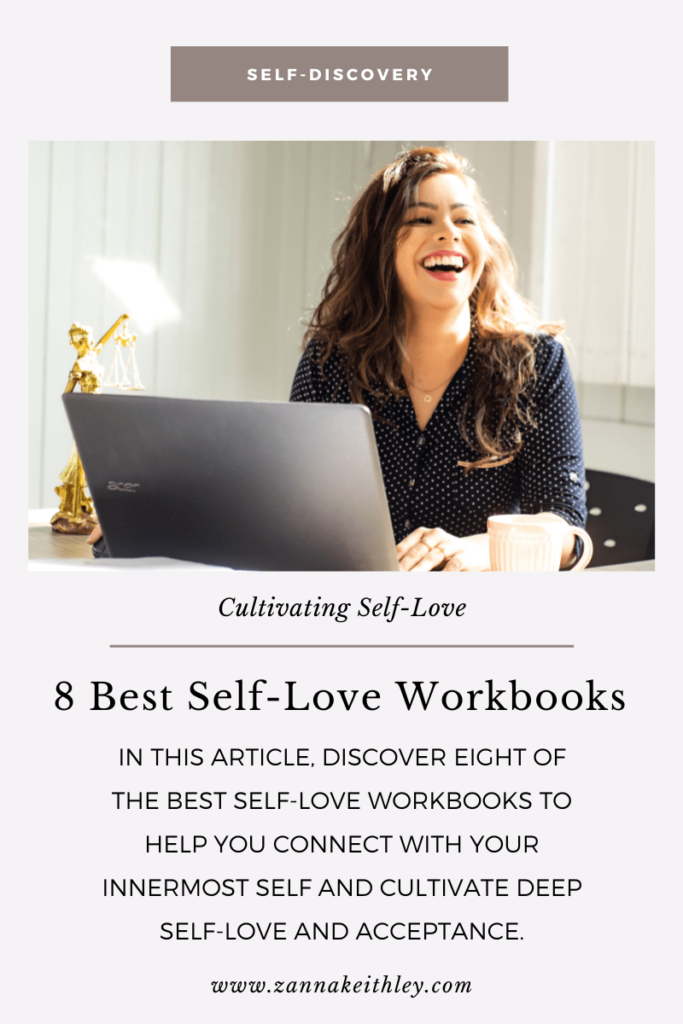
Pin this for later! 8 Best Self-Love Workbooks (For 2024) 
Zanna Keithley is an author, poet, and social media content creator who writes short prose dedicated to inspiring readers to follow their dreams, trust their intuition, and create beautiful and fulfilling lives. You can find her original writing on Instagram @zannakeithley.
-
30 Day Self-Care Challenge (Free Printable)
Download your free 30-day self-care challenge and challenge tracker below, plus get tips for how to approach each activity to best serve your total well-being: mind, body, and soul.
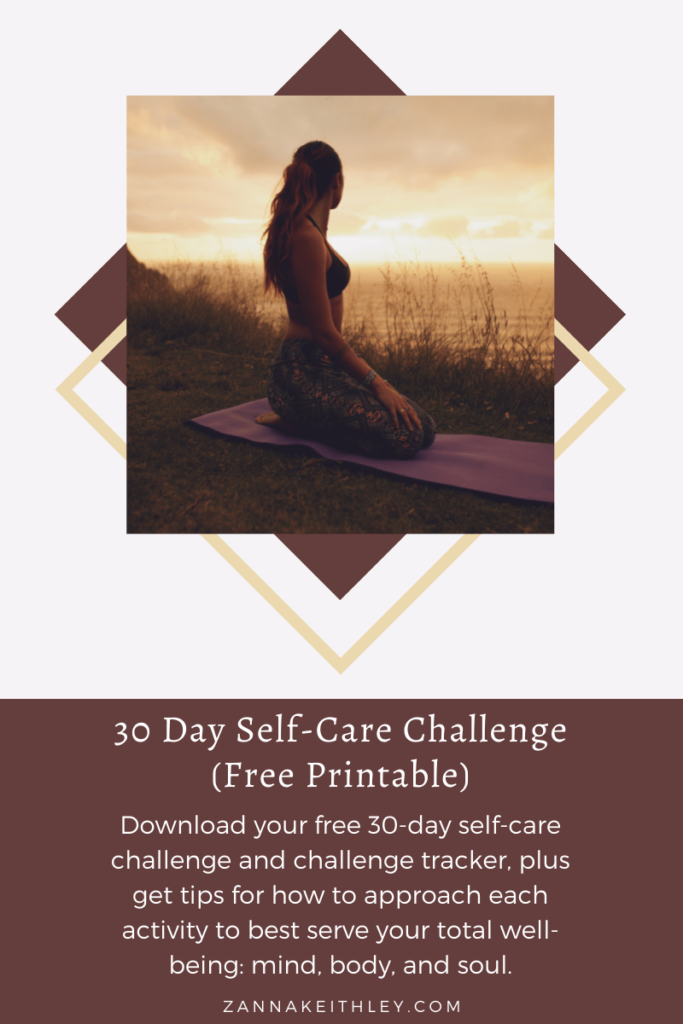
Pin this for later! 30 Day Self-Care Challenge (Free Printable) What Is Self-Care?
Self-care refers to the combination of practices you engage in to serve and support your physical, spiritual, mental, and emotional well-being. When you stick to a sleep schedule, brush your teeth, schedule medical checkups, eat healthy foods, and take walks around your neighborhood, you’re practicing daily self-care.
But self-care also goes a little deeper. Self-care means making space in your life for silence. Connecting with the innermost you. Asking your soul what it needs. And then, giving yourself that thing.
And at an even deeper level, it means noticing the trending direction of your thoughts. Are you speaking to yourself with kindness? Do you constantly criticize yourself? Are your inner dialogues loving and compassionate or condescending and judgmental toward yourself?
And when you notice that you’re being hard on yourself, you then have the option to choose differently—to be a little gentler, a little kinder. A little more understanding. (This is directly tied to mindfulness.)
Self-care is a deeply personal practice. What looks and feels like self-care to you might not align with someone else’s definition of self-care. And that’s okay. What’s important is defining what self-care means to you—and then, prioritizing it not as an option but as an essential aspect of your health and well-being.
To help you with this, I’ve created a 30-day self-care challenge filled with practices that you can personalize to fit your own needs.
In many ways, this is also a self-love challenge. This challenge is designed to help cultivate a mindset of deep care, kindness, and compassion toward yourself. (Because if you’re anything like me, you’re likely your own harshest critic.)
As you begin your self-care challenge, I want you to remember that this is your challenge. So if there’s anything on this list that doesn’t resonate with what feels right to you, feel free to change it to something that feels better.
You’re also empowered to define what each activity means to you. Below, I provide you with suggestions for how to approach each self-care practice, but if you have different ideas, definitely go ahead and do what feels best to you.
Don’t worry so much about being perfect. Rather, focus on what feels good, right, and aligned.

30-Day Self-Care Challenge
Below, you’ll find some suggestions for how to approach each of the activities in this challenge. But remember, this is your self-care challenge. So if you have a different idea for how you want to proceed, or if you want to replace one of the challenge tasks altogether, go for it!
Start A Gratitude Journal
Don’t forget to download your free 30-day self-care challenge here.
You can use a notebook, journal, or even your preferred notes app on your phone. Write down 3 things you’re grateful for. Then, for the rest of the challenge, keep writing 3 things you feel grateful for every day. If you need help, check out my list of 500 things to be grateful for today.
Write Down 10 Things You Love About Yourself
This one can also be done in a notebook, journal, or digital document. Pick 10 things you really love about yourself and write them down. These can be physical, mental, emotional, or spiritual qualities—anything you want. If you’d like, you can add a “why” statement to each list item, diving deeper into why each of these things make you so incredible and unique.
Recite 1 Positive Affirmation Every Hour
A positive affirmation is an uplifting statement designed to boost your confidence and self-belief. I have thousands of positive affirmations across this website if you need help. Recite at least one positive affirmation to yourself every hour today. If it helps, you can set phone reminders or write these affirmations on post-it notes.
Set Phone Reminders With Uplifting Words
Set phone notifications to go off throughout the day filled with words to uplift, inspire, and motivate you. You can be your own biggest cheerleader here, reminding yourself that you’ve got this, you’re worthy, you’re incredible, you’re more than enough—whatever you most need to hear throughout the day. Fill the screen with positive, loving words. You can also write affirmations or your favorite quotes here if you’d like.
Compliment Yourself & Others Throughout The Day
How often do you tell yourself what a good job you’re doing? How often do you spend time simply being proud of yourself? How often do you look in the mirror and smile into your own eyes? Compliment yourself throughout the day. Then, spread these good vibes and compliment the people you interact with. Make someone’s day today.
Journal & Reflect On The Past Year
In the busyness of daily life, we can often forget to spend time reflecting on how far we’ve come. Take some time today to reflect. Journal your thoughts and feelings. If you encountered difficult moments, make sure to honor your own resilience and strength. Acknowledge both the good and the bad. Be kind, honest, and compassionate.
Do Something That Makes You Happy
This one’s pretty broad. Simply do something that makes you happy.
Does buying yourself a special coffee make you happy? Does reading a good book or watching your favorite movie make you happy? Does time spent in nature make you happy?
You’re not limited to doing just one thing. If possible, you can do one thing that makes you happy in the morning, one things that makes you happy in the afternoon, and one thing that makes you happy in the evening.
Follow A Guided Meditation
If you already meditate, this one should be pretty straightforward. Don’t meditate? That’s okay! I personally use the Insight Timer app for guided meditations. There, you’ll find thousands of free meditations you can listen to. See if you can find one that appeals to you. You don’t have to sit in a special posture or try to clear your mind of thoughts. Just sit comfortably, close your eyes, and listen.
- You May Also Like: 9 Guided Meditations For Manifesting Your Desires
Express Your Creativity
Draw. Paint. Write. Play with chalk. Make paper snowflakes. Color in an adult coloring book. Or a children’s one. Whatever feels good to you.
Spend Time In Nature
This can be as simple as going out for a walk around your neighborhood. You might also go out on a hike or spend some time near a lake or the ocean. Whatever you do, turn off your phone and unplug for a bit. Notice the moment using all of your senses. Inhale peace. Exhale anything that doesn’t serve your mind, body, and soul.
Cook A Special Meal For Yourself
You can cook your favorite breakfast, lunch, or dinner. (Or all three.) You might also try cooking one of your favorite recipes from childhood. And if cooking sounds more like self-torture than self-care, order out from your favorite takeout spot.
Practice Yoga Or Do Some Light Stretching
If you don’t feel super comfortable with yoga but are willing to try, there are tons of great yoga routines for beginners on YouTube. You can also find a light stretching routine to try out!
Write A Letter To Your Younger Self
I’d definitely recommend doing this practice when you have some uninterrupted time to yourself. You can grab a notebook, lined paper, stationary, or open up a blank digital document. Visualize yourself at a certain age, whether it’s when you were 8, 11, 16—whatever feels right to you. What do you want to say to this version of you? Is there something you think they really needed to hear? Write these things down. There’s a good chance your present-day self needs to hear these things, too.
Read A Book You Genuinely Enjoy
Do you have a favorite feel-good fiction book? Is non-fiction more your thing? Is there a new book you’ve been dying to read? Make time for some reading today. I’d recommend reading at least for an hour, but this is completely up to you.
Spoil Yourself – You Choose How
What does spoiling yourself mean to you? For some, spoiling themselves means buying a special coffee or meal. For others, spoiling themselves looks like candles and bubble baths. Try to find at least one way to spoil yourself today. (But it’s completely okay to pick more than one thing—encouraged, even.)
Try An Artistic Endeavor
You don’t have to be a poet to write poetry, and you don’t have to be a painter to paint. Even if you’re a creative person already, see if you can try something you wouldn’t normally do. Don’t judge your work. Just have fun with it.
Make A Music Playlist Of Old & New Favorites
See if you can remember your favorite songs from childhood. Add in some of your current favorites. Fill your ears with sounds you love.
Write Down 10 Self-Promises
A self-promise is a commitment you’re willing to make to yourself about your life and your future. For help here, you can check out my article, 100 Wholehearted Promises To Make To Yourself Today.
Write Down & Release 1 Limiting Belief
A limiting belief is a deep-seated belief that holds you back from realizing your limitless potential and living the life that you know you’re truly meant to live. It’s the thing that’s preventing you from moving forward: your fears, your worries, your doubts about your own potential.
Take some time to identify what beliefs you carry that aren’t serving you. Write at least one down. Then, create a new, reframed belief. So if your limiting belief is that you don’t have what it takes to succeed in your chosen career path, you can create a new belief that you’re more than capable of succeeding and thriving.
For more guidance, I’ve created a digital workbook for releasing limiting beliefs to help you begin releasing your old, limiting beliefs (and creating new, empowering beliefs) today.
Unplug For At Least 2 Hours
What makes you feel good when you’re not on your phone or devices? Do that thing.
Brainstorm Ways You Can Destress Your Life
What are the biggest stressors in your life? Write them down. Then, write down some ways you can remove some of your daily stress.
Ideas include going to bed on a set schedule, meditating first thing in the morning, meal prepping at the beginning of the week, organizing your office, decluttering your email inbox, and anything else that might remove a little bit of the daily stress you often experience.
Write A Letter To Your Future Self
Choose a specific age in the future: one year from now, five years from now, ten years from now—whatever feels best to you. Sit down and write a letter to this version of you.
You can write about what’s happening in your life right now and share some funny or heartfelt stories that will make your future self smile. You can write about your hopes and dreams. You can write your favorite quotes and/or something you heard recently that’s especially meaningful to you.
When you’re done, place your letter in an envelope, address it to yourself with a date on the front, and stash it somewhere for safekeeping.
Write Down Your Goals For The Next Year
I’d recommend writing down five to ten big and small goals. Then, pick a goal and write an action plan for it. What’s the next step you need to take to achieve this goal? You can write next steps and action plans for as many goals as you’d like.
Treat Yourself – You Choose How
This one’s just like the spoil yourself day—you get to define what treating yourself means to you. Maybe it means a spa day. Maybe it means treating yourself to a couple hours of uninterrupted you time. Maybe it’s buying your favorite dessert from a bakery or going to the bookstore and picking out some books. Whatever it is, just make sure it feels special and good to you.
Make Space For Fun & Play
What’s fun to you? What feels like play to you? Engage in activities that make you feel good. Play video games. Have a crafting day. Build a blanket fort. Create your own Lego masterpiece. Go to the beach. Dance like no one’s watching. Connect with your inner child and let yourself come alive in pure, unadulterated joy.
Connect To The Earth & Nature
My favorite way to connect to the earth is to stand with my bare feet against the dirt and close my eyes. You can also do this while watching the night sky. Gardening is also a profound way to connect to the earth. What can you do today to connect to the trees, sun, stars, ocean, wind, and all parts of nature?
Compliment Yourself When You Look In The Mirror
Every time you look in the mirror, look yourself in the eyes and say either internally or aloud something really kind to yourself. Offer yourself sincere compliments. Speak with loving kindness.
Declutter Your Social Media Accounts
Go through your most-used social media accounts and unfollow/unfriend anyone who may cause you to feel negative energy within. Keep the ones that uplift your spirit, inspire your dreams, and/or make you laugh. If they feel like positive energy, keep them on your list. If they feel like negative energy, send them love and gently distance yourself from them.
Try 1 Thing You’ve Never Done Before
It’s easy to get in a rut in your daily life, so this is a chance to do something new. It doesn’t have to be a really big thing like skydiving or traveling to a new country. Maybe there’s a restaurant you’ve never tried or a dish you’ve never cooked. Maybe there’s a crafting activity that’s been hanging out on your Pinterest boards for a while that you’ve been meaning to get to. Maybe there’s a park you’ve never been to that you can go visit. This can be as big or as small of an activity as you want.
Repeat Your Favorite Activity From The Challenge
This is the equivalent of the free space in bingo. What activity did you really love doing over the past 30 days? Do it again! You can also repeat multiple activities if you want. For instance, you can recite positive affirmations once per hour throughout the day while also making time in the evening to read a good book.
For more resources on spirituality, meditation, manifestation, and all things self-love, connect with me on Instagram and Pinterest, where I’m posting positive affirmations and empowering messages daily.
More Articles You May Like
- Manifestation Challenge: Free 30-Day Calendar
- How To Visualize (For Manifestation)
- How To Tap Into Your Intuition (A Complete Guide)
- 369 Manifestation Method: What It Is & How To Do It
- Manifestation Journal Template (Free Printable PDF)
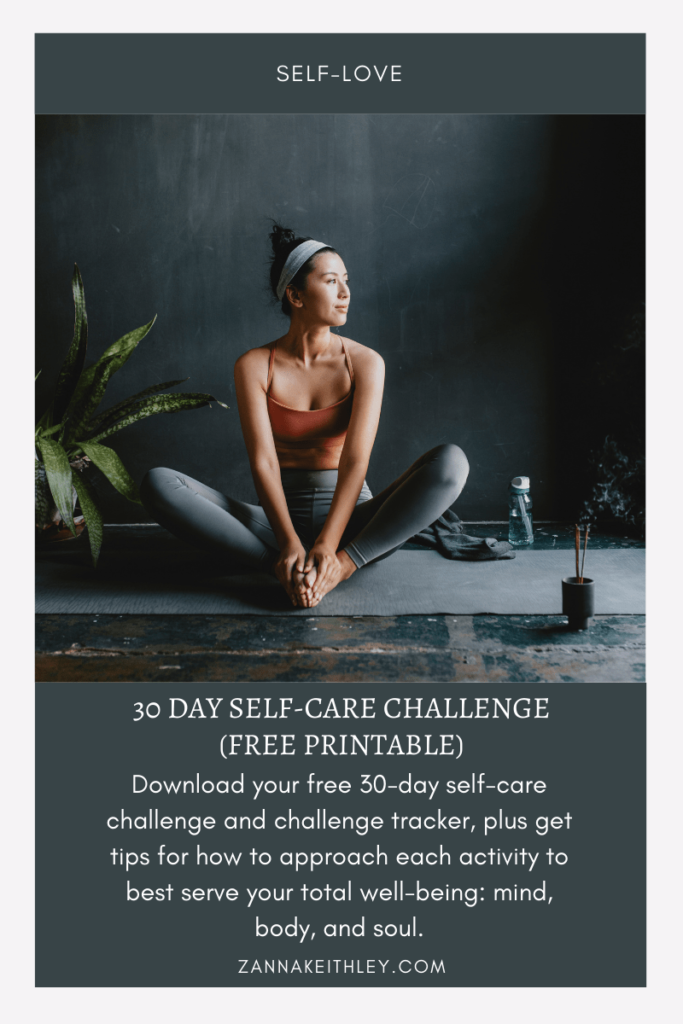
Pin this for later! 30 Day Self-Care Challenge (Free Printable) 
Zanna Keithley is an author, poet, and social media content creator who writes short prose dedicated to inspiring readers to follow their dreams, trust their intuition, and create beautiful and fulfilling lives. You can find her original writing on Instagram @zannakeithley.


